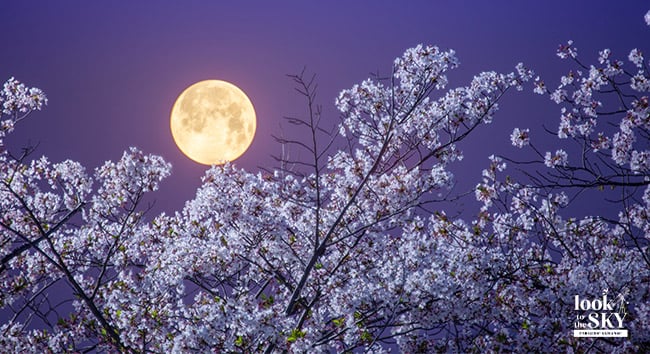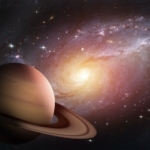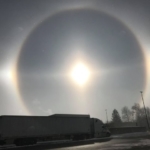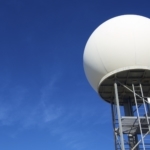The April night sky has many highlights, including bright planet pairings with the Moon, shooting stars, and the Full Pink Moon. A few sky events worth noting: Day becomes night with the Great Solar Eclipse, the Moon “kisses” Jupiter one last time, and meteor shower season kicks off with the Lyrids (from constellation Lyra). You’ll even have a chance to spot a comet! Plan your night sky adventures each month with the Farmers’ Almanac Night Sky Guide.
Watch out for the telescope emoji – 🔭 – which means we recommend binoculars or telescopes. Looking for a great starter telescope or more? Check out our Starry Nights Gift Guide.
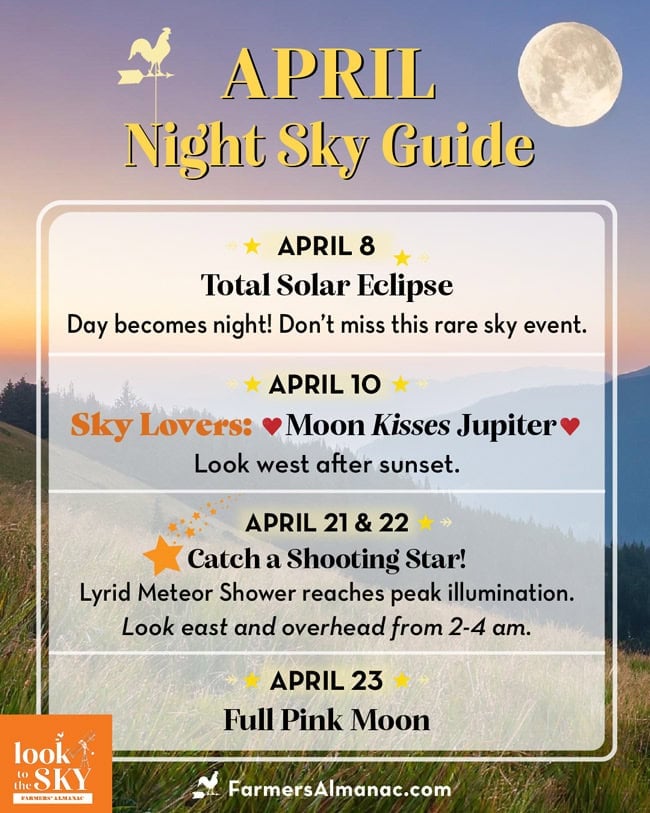
April Night Sky Guide
Farmers’ Almanac has provided Night Sky Guides and astronomical information since 1818. All times and positions are listed in Eastern time, 40 degrees north of the equator—unless otherwise listed. This includes many parts of the United States, such as cities in the central and northern states like New York, Chicago, Denver, and San Francisco.
If you see the terms sunset, midnight, sunrise or local time, this is true no matter where you are located (no need to add or subtract for your time zone). Have questions? Ask us in the comment section at the end of this article!
April 1 – Last Quarter Moon And Mercury
About 45 minutes after sunset, look west-northwest to catch Mercury low on the horizon. This will be one of your last chances before Mercury becomes lost in the bright glow of the Sun. Mercury retrograde begins today (April 1-25, 2024).
The last quarter Moon occurs on April 1, 2024 at 11:15 p.m. EDT.
🔭 April 6 – Crescent Moon Triangle: Saturn, Moon, Mars
Approximately one half hour before sunrise, grab your binoculars and gaze towards the east-southeast horizon. You might catch a glimpse of a thin, waning crescent Moon. Two visible planets will hang nearby as “stars” forming a triangle in the sky, as illustrated here:
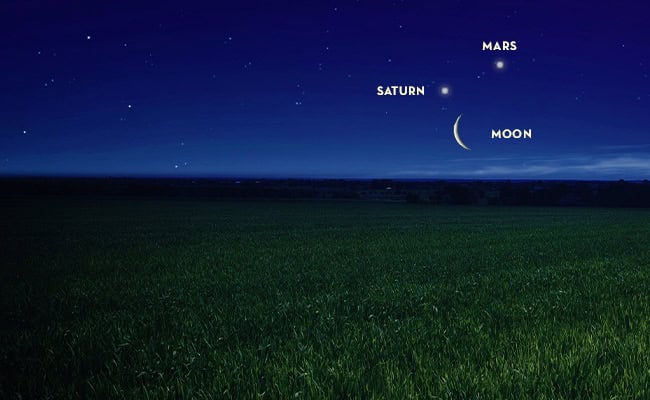
Saturn (magnitude of +1.1) sits about two degrees above the Moon, while Mars (approximately the same brightness, magnitude +1.2), will be to the upper right.
As April begins, Saturn, located in Aquarius, gradually rises in the east (and slightly to the south) during the early predawn twilight. Mars also rises just south of east during the morning twilight.
April 7 – Crescent Moon And Venus
Up for a challenge? Just before dawn breaks today, look east and see if you can glimpse a very thin crescent Moon and Venus to the lower left. Despite Venus being very bright, daylight is increasing, making it difficult—if not impossible—to spot.
This month, Venus rises less than thirty minutes before the Sun, and its bright light is hidden by the Sun’s brightness for a longer time than usual. Observers who are around 40 degrees north will have to wait until July or August to see Venus appear very low in the sky during sunset, when it becomes visible again.
⭐ April 8 – Total Solar Eclipse And New Moon “Star View”
The Great Solar Eclipse occurs on April 8, 2024. Don’t miss this rare event! The next chance to witness a total solar eclipse in North America won’t happen until March 2033, which will require travel to western Alaska.
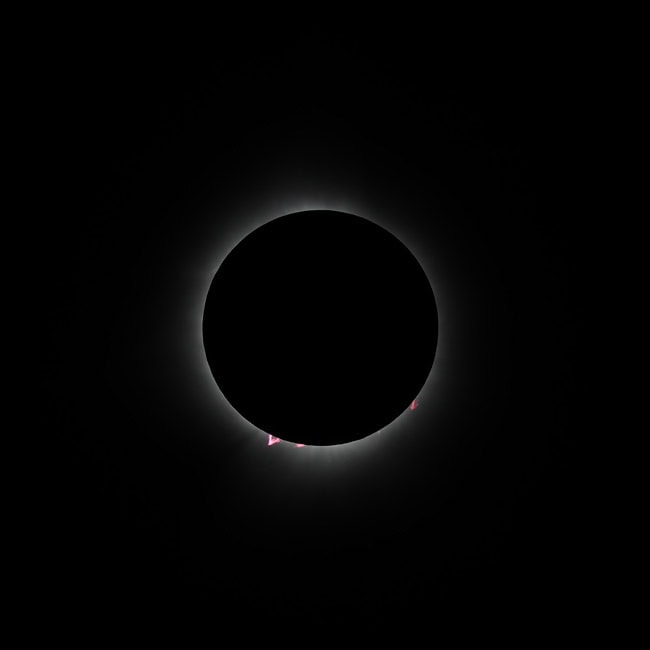
April 8, 2024 total solar eclipse photograph by Brandon Spring in Shirley Mills, Maine
Any questions? Contact [email protected]
Fun fact: Two planets may become visible on either side of the Sun/Moon during this total eclipse: Jupiter and Venus (to the left and right, respectively).
Along with this event, the New Moon occurs at 2:21 p.m. EDT. New Moons are excellent times for stargazing!
Tonight, look south at around 9pm local Daylight Saving Time to catch a glimpse of Leo, the lion. One of the brightest stars in Leo is Regulus, which represents the lion’s heart.
⭐ 🔭 April 10 – The Moon Kisses Jupiter – Again!
Thirty minutes after the Sun goes down, look to the west-northwest part of the sky to see a thin waxing crescent Moon. Just below and to the left you’ll see the bright planet Jupiter.
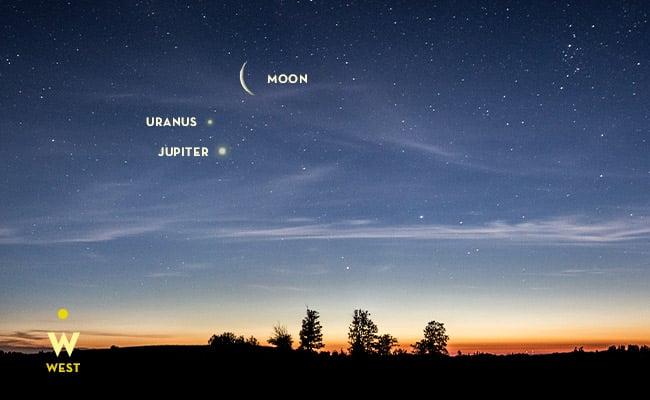
Throughout the month of April, Jupiter will slowly move lower and lower down in the west-northwest, eventually leaving the evening sky. This means that you won’t be able to see the Moon and Jupiter hanging together and “kissing” in the night sky as you may have seen each month since Valentine’s Day.
If you use a telescope, you’ll notice that Jupiter looks smaller than it did when it was opposite the Sun last November, now appearing to be about two-thirds of that size. You may even catch a glimpse of Uranus, situated above Jupiter.
April 11 – Mercury Disappears!
Today, Mercury reaches a spot in its orbit where it lines up between the Sun and Earth (inferior conjunction).
But by the middle of April, Mercury will rise on the eastern horizon just before the Sun comes up, but it will be nearly impossible to see (even through a telescope) because the planet will be very low not very bright.
April 15 – First Quarter Moon
The first quarter Moon occurs at 3:13 p.m. EDT.
April 16-20 – “Star-hop” to Arcturus
Have you ever star-hopped before? Star-hopping is when you use one star pattern to locate another! This week, star-hop from the Big Dipper to one of the brightest stars, Arcturus! Here’s how:
Go outside at 10 p.m. local daylight time on a clear night and look to the northern sky. You will easily spot the Big Dipper high in the April sky. (The dipper’s ladle-like shape will appear to be upside down.)
Imagine extending the curved line of the Big Dipper’s handle further to the right (east). This imaginary line will lead you to Arcturus, located in the constellation known as Boötes the Herdsman.
Arcturus is the brightest star you can see in the northern part of the sky at this time—even brighter than other well-known stars like Vega and Capella.
Yet Arcturus wasn’t visible to us without a telescope until about 500,000 years ago, and it’s possible that in another 500,000 years, we won’t be able to see it without help again. This is not because of the star’s changes, but because it’s very far from Earth.
Arcturus is moving quickly through space and will come closer to Earth over the next few thousand years. The astronomer Edmund Halley noticed in 1718 that this bright star had moved from the spot where the ancient astronomer Claudius Ptolemy had recorded it around 150 A.D.
Traveling about 90 miles per second, it has shifted toward the southwest by 2.5 Moon diameters in 2000 years. Watching how Arcturus moves is a great example of how stars and other objects in space are always in motion.
🔭 April 20-21 — Spot The “Devil Comet”
Comet 12p/Pons-Brooks also known as the “Devil Comet” should appear brightest when it is closest to the Sun on April 21, 2024. Look west immediately after sunset. (See your local sunset time on your Members’ Dashboard.) Find the bright “star” Jupiter as a landmark; the comet will appear slightly to the lower left.
Read our “Devil Comet” FAQ with more details!
Note: You must have a clear view of the western horizon to see the Devil Comet (no trees or tall buildings in the way). We recommend using binoculars or a telescope.
⭐ April 21-22 — Catch A Shooting Star!
The Lyrid Meteor Shower reaches peak activity in the early hours of April 22, 2024. Look east and overhead between the hours of 2-4 a.m.
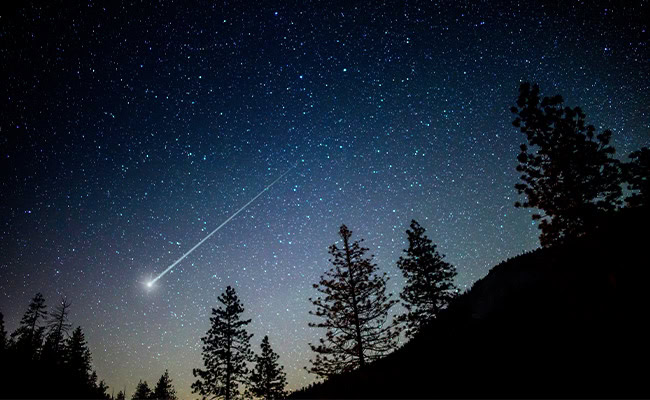
Unfortunately, the full Moon will be blazing in the April sky, which will squelch the majority of shooting stars from this annual shower. But there is still a chance you may catch some bright ones! If weather conditions are perfect, 10 to 15 meteors per hour may be visible.
⭐ April 23 – Full Pink Moon
The Full Pink Moon reaches peak illumination at 7:49 p.m. EDT.
Related Product: Pink Moon Bracelet
April 25 — Mercury Retrograde Ends
Mercury retrograde ends today, which means the planet appears to resume its direct motion.
🔭 April 30 – Mercury
If skies are clear, binoculars may show Mercury (magnitude +1.2) an hour before sunrise, near the eastern horizon.
Join The Discussion
Which sky event are you looking forward to in the April night sky?
Do you have any questions or suggestions for our night sky guides?
Share with your community here in the comments below!

Joe Rao
Joe Rao is an esteemed astronomer who writes for Space.com, Sky & Telescope, and Natural History Magazine. Mr. Rao is a regular contributor to the Farmers' Almanacand serves as an associate lecturer for the Hayden Planetarium in New York City.

